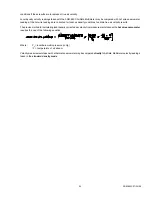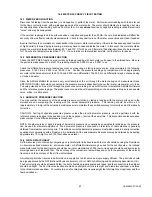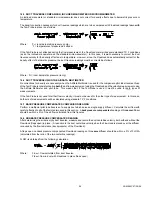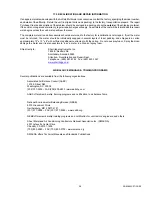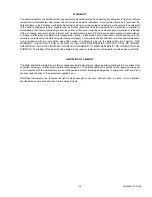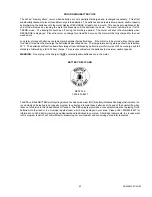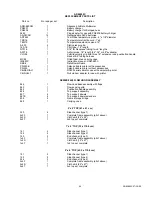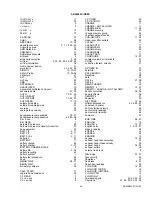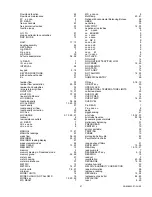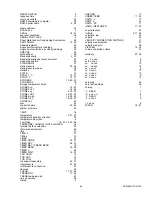
ADM-880C 07/20/09
60
APPENDIX A - NIST VELOCITY TESTING
The AirData Multimeter is primarily an electronic micromanometer which measures pressures very accurately. The velocity
pressure generated by the various probes is used to calculate and display air velocity and air flow. Confirmation of the meter
pressure measurement accuracy is fairly simple using NIST traceable transfer standard gages.
The testing of the meter with various velocity probes, however, is not as straight forward. Velocity accuracy testing requires
the use of a fairly large wind tunnel to reduce boundary layer and wall effects. The wind tunnel must provide a very flat
velocity profile and a range from 50 to 9000 fpm.
Such a facility does exist at NIST and can provide directly traceable testing and certification.
National Institute of Standards and Technology
Rt. #I-270 & Quince Orchard Road, Bldg. 230
Fluid Mechanics Bldg.
Gaithersburg, MD 20899
Phone: (301) 975-5947
RECOMMENDED TEST PROCEDURES
The AirData Multimeter automatically corrects air velocity and flow readings for the density effects of barometric pressure.
The meter also automatically corrects for density variations due to local temperature if the TemProbe is connected. Readings
will be corrected to local density true air speed unless standard density, mass flow readout is specifically selected. No such
selection is required, since the NIST velocity correction is normally for local air density. The AirData Multimeter does not
correct air velocity readings for relative humidity.
The AirData Multimeter TemProbe and extension cord must be plugged into the meter and placed in the wind tunnel airstream
to correct the readings for the density effect of variations in temperature. Record the AirData Multimeter temperature and
absolute (barometric) pressure reading at the beginning and end of each probe test range. These readings must fall within
the specified tolerances to allow velocity testing.
The hose lengths connecting the probes to the AirData Multimeter should not exceed 15 feet of 3/16" ID flexible tubing.
The air velocity test points should be preselected to provide data over the full range of each probe, with additional test points
at the velocities of most interest for a given application. Suggested test points might include:
Pitot tube:
50, 75, 100, 150, 200, 300, 500, 1000, 1500, 2000, 2500, 3000, 4000, 5000, 6000, 8000 fpm
AirFoil probe:
50, 75, 100, 150, 200, 300, 500, 750, 1000, 1500, 2000, 2500, 3000, 4000, 5000 fpm
VelGrid:
50, 75, 100, 150, 200, 250, 300, 500, 1000, 1500, 2000, 2500 fpm
NIST LASER DOPPLER VELOCIMETER WIND TUNNEL TESTING
The AirData Multimeter probes
must
be positioned at the wind tunnel centerline.
Select the automatic storage mode on the AirData Multimeter. When the air velocity has stabilized, begin the AirData
Multimeter velocity sampling interval. The AirData Multimeter must be taking readings throughout the LDV sampling period.
The simultaneous sampling period must be long enough for the AirData Multimeter to obtain the average of at least 10
readings at velocities less than 200 fpm. Record the LDV and AirData Multimeter averages for each test measured velocity.
The tests described above are extensive and relatively expensive. The expense of obtaining such traceability is justifiable
when a transfer standard meter and probes are designated as a "Sheltered Set". This "Sheltered Set" should only be used
to verify the accuracy of instruments which are used in the field.
Содержание AIRDATA ADM-880C
Страница 42: ...ADM 880C 07 20 09 37 FIGURE 6 3 VELGRID ASSEMBLY...
Страница 50: ...ADM 880C 07 20 09 45 FIGURE 10 1 FRAME STORAGE FIGURE 10 2 FLOWHOOD IN CASE...
Страница 51: ...ADM 880C 07 20 09 46 FIGURE 10 3 FLOWHOOD ASSEMBLY...
Страница 53: ...ADM 880C 07 20 09 48 FIGURE 10 7 1X5 FRAME ASSEMBLY FIGURE 10 8 3X3 FRAME ASSEMBLY...









